Read the French version of this response, here
At the beginning of the week, the Group of Experts on the Democratic Republic of Congo (GoE), published a report in which it accused the Rwandan army (RDF) of conducting military operations in Eastern DRC and supporting the “Movement of 23rd March” (M23). In leveling the accusations, the GoE gave names of the Rwandan army commanders involved in DRC.
The GoE is an outfit established in 2004, by the “Sanctions Committee” of the United Nations Security Council (UNSC) in resolution 1533 (2004) to monitor the ongoing conflict in Eastern DRC. Its mandate is renewed annually.
The report further accuses the Congolese army, FARDC of having merged with the Front of Liberation of Rwanda (FDLR), a terrorist organization led by perpetrators of the genocide against Tutsi, and other violent militias. The GoE report indicates that the said militias led by FDLR, were given new ammunition, equipment, and payments in thousands of American Dollars in order to fight M23. M23 is a rebel group made of Kinyarwanda-speaking Congolese, denied citizenship in their country for being assimilated to Rwandan Tutsi. On these two links, Late Mwalimu Nyerere and former South African President Thabo Mbeki explain the plight of Congolese Tutsi.
The group’s report accuses M23 of conducting exactions on civilians, including in the alleged “massacres of Kishishe”. Here is the link to the full UN report.
Underneath the pompous “UN-Expert” title however, the Group’s reports and its authors hardly live up to the media hype they are usually reserved. Since its establishment, the GoE has had issues with the Rwandan government, and its first coordinator, Steve Hege was finally sacked following the exposure of his bias towards the FDLR. In this article, written prior to his appointment as coordinator of the GoE, Steve Hege sanitizes the FDLR and concludes that the only way it can return to Rwanda, is if the international community could mount pressure against the Rwandan government, forcing it to negotiate with the genocidal militia. As soon as he was appointed, he attempted to achieve his dreams by accusing Rwanda of crimes in DRC…
The current coordinator of the group is Belgian lawyer Melanie De Groof from Antwerp University, an institution known to fund ethnic profiling research in Rwanda, supervised by Belgian genocide denier Filip Reyntjens, a tenure professor at the school and former President Habyarimana’s advisor. In this article written long ago, I explain how the Belgian University is the remaining laboratory of ethnic tensions in Rwanda.
And true to form, the GoE’s main source of information is the FDLR, as they admit themselves in the report: On Page 110 in annexes, the report confesses: “We shared the lists of RDF soldiers operating in DRC with the Government of Rwanda, which responded by pointing out that the 12 individuals referred to in our report had appeared in a previous FDLR propaganda video.”
Another key “evidence” recovered by the UN experts to establish Rwanda’s support to M23 is a decomposing piece of paper, a “Power of Attorney” allegedly issued by one RDF soldier to another as some sort of will, in case he was to die in combat:
“The documents below, recovered by a local armed group engaged in fighting M23 and RDF, are signed by RDF elements and by their superior, Lt. Col. Emmanuel Mugabo, and detail that the RDF elements provided power of attorney on their bank accounts to close relatives… One RDF officer confirmed to the Group that RDF soldiers sometimes carry these types of documents when sent to the battlefield.”

Only Pte. Barore Elyse, if he even exists, his telephone number doesn’t. There is no service provider in Rwanda who carries: 9791088723 numbers. Here is the piece of paper:
“Between November 2022 and March 2023, the report contends, RDF troops were identified in the territories of Rutshuru, Masisi, and Nyiragongo. The Rwandan forces sometimes lived with M23 fighters.”
How do they know this? “This is attested by a notebook found by the UN experts in Mushaki, a town under rebel control. The document listed the names and ranks of Rwandan soldiers sent on a mission in the area”, the report announces. Apparently the UN experts happened upon a “notebook” with the title: “List of Rwandan Soldiers deployed in DRC”. The holy grail, it seems, was just lying about, waiting for GoE people to stumble upon it. For having been embedded with the army before, I know for a fact that no army, not even militias keeps such lists. This is the type of ridiculous “proofs” littering the entire UN report, that FDLR elements pass on to the UN experts to publish on face-value, in the hope that no one will take a closer look…
Elsewhere in the report, Rwanda’s military operations in favour of M23 rebels are coordinated by President Kagame’s security adviser, General James Kabarebe. Now, to affirm this is to lack awareness on Rwanda’s army and Rwanda’s governance in general. Afande Kabarebe is too senior for an operation of such a nature. While mentioning his name sounds sensational, a Four Star General, former Chief of Defence Staff, and former Minister of Defence cannot command a detachment of troops within the RDF. The nearly retired, most senior Rwandan General, spends his time in military academies, teaching young troops the Rwandan fighting doctrine, as do all Rwandan elders.
Having said that, our UN experts would be advised not to wish for Afande Kabarebe to be involved, because the last time he commanded troops into Zaire, he marched to Kinshasa in a matter of months, toppled former dictator Mobutu, appointed a new one, and became army chief of Staff, he also set Joseph Kabila, one of the boys in his security detail to succeed his father as president of the vast, rich country. He was only a two-star General at the time, today he has four…
In 2008, a random judge in Spain indicted what seemed like a googled list of forty RDF’s top leadership. Adducing no evidence, the Spaniard issued arrest warrants against forty “African-sounding” names on a whim, accusing them of most heinous crimes, but he could not follow through when, in October 2015, Rwanda’s head of intelligence was arrested in the United Kingdom in enforcement the warrants. Lieutenant General Karenzi Karake was promptly released with apologies, in an embarrassing saga that triggered the Spanish Supreme Court to annul Fernando Andreu Merelles’ indictments and abandon the country’s self-arrogated “International Jurisdiction” altogether. At the time, Generals James Kabarebe, Jean Bosco Kazura, Frank Mugambage, and Rugumyangabo Gacinya, all featured in the Spanish infamous list. It seems the United Nations Group of Experts has reproduced it, sixteen years later.
But why would the UN group accuse Rwanda of meddling in eastern DRC? Let me explain: Kinyarwanda-speaking Congolese are never defeated militarily; They are, diplomatically. Whenever they start an armed struggle to canvass for recognition as full DRC citizens, and return their nearly 300,000 exiled community, the movement is accused of made-up crimes, then its leaders are indicted by the ICC, following which the group is made a pariah, sanctioned by all countries, and the cause of the Congolese Tutsi languishing in refugee camps across the region is set back another decade. Until they organize again, ten or so years later, start a fresh armed struggle, fresh accusations are brought up, etc. This has been going on for three decades thus far.
DRC politicians have no incentive to address the question of Banyamulenge and all Congolese Rwandophones both in the country and in exile, because the UN experts fight their diplomatic war by accusing Rwanda, while UN blue helmets, militias and mercenaries of all kinds fight their ground war.
A few months ago, colleagues and I travelled to the Eastern DRC war zone, to investigate alleged “massacres of Kishishe”, which the UN had accused M23 to have committed. At the time, the total number of alleged victims was being “auctioned” between the UN, NGOs, and the DRC government, with none of them ever conducting an investigation on the ground: 150, 200, 300 victims, mass graves and captured sexual slaves, they all seemed to compete.
At the time, the Congolese government even declared a three-day national mourning, Western embassies sent messages of condolences and the UN representative in DRC addressed the Security Council and requested sanctions. Imagine our surprise then, when we actually reached Kishishe and found life going on normally. A brief battle had taken place between M23 and a coalition of FARDC, Mai-Mai local militia, and FDLR; 13 combatants had been killed, and 8 civilians. No mass graves, nor other Boko-Haram-type exactions, Kishishe villagers were going about their business. Here is our report in English and in French, with video interviews of Kishishe residents and their names and telephone numbers.
Khalas, what had started as a global (fake) outrage campaign to galvanise indictments and sanctions, died a natural death, but no one, not the DRC government, the NGOs or the UN, made an effort of walking back their lie…
Further in the report, the UN “experts” alert that Rutchuru-based M23 is about to coalesce with “Twirwaneho”, a Banyamulenge rebel group based in South Kivu’s high plateaux. Only, it is geographically impossible for M23 and Twirwaneho to meet. While the distance separating the two factions is over 300 miles in a straight line, the climb of mountains and valleys increases the distance to over 1000 kilometers of “road”; that is the distance between Kigali and Nairobi, with twenty or more other congolese communities in between..
To those who know Minembwe, the Banyamulenge fiefdom where Twirwaneho is based, just the climb from the Rusizi Plaine in Uvira to the high Plateaux is one week on foot. Why the hype then? Well, every year, MONUSCO’s term, the peacekeeping mission in DRC is up for renewal, and at this time of the year, the UN Group of Experts publishes a report to alarm the DRC public opinion, announce an imminent attack from Rwanda, to ensure the impotent UN mission’s mandate is renewed.
In the fable of the nurse who maintains the sick in a state of illness to continue benefiting from the goodies destined for the sick, the sick doesn’t speak for himself, family and friends speak to the sick-nurse who makes demands on his behalf. “The patient asked me to tell you that he wants wine and foie gras; tomorrow he shall require lobsters”, etc. The sick nurse in this case is the UN Group of Experts, and the sick, naturally, is the Democratic Republic of Congo.
To understand the DRC crisis, and the mandate of MONUSCO, one needs to appreciate the place of the city of Goma in international contraband. Goma is the headquarters of all NGOs, money launders, mineral traders, world-class bandits of all inclinations and the MONUSCO is there to protect them. It is no accident that most Western countries have a consulate in Goma and no other cities in the vast continent-state. The MONUSCO is not in DRC for the Congolese people.
You see, the big Congo territory was never created as a country for its good people – the Congolese, it was set apart as a reserve from where industrial countries would dish out minerals. The atomic bombs dropped in Nagasaki and Hiroshima at the end of WW-2, were made from uranium mined in Shinkolobwe, in the Haut-Katanga Province. Chaos and a weak government must be maintained, politicians corrupted for Western nations to flourish. Goma is the mineral capital of the world, a city as important as Paris, New York or Geneva, much more important than DRC capital, Kinshasa!
Seen in that prism, Rwanda’s progress appears to be a disruptor, a development mirror that might embolden Congolese citizens to start asking questions. To prevent that, a narrative has been constructed, painting Rwanda as the source of all Congolese evil: “All which you see in Rwanda is yours”, Western media reminds them, daily. Ironically, foreigners favor Goma to, say Lubumbashi, for its accessibility and proximity to Rwanda, which offers them a reliable airline (Rwandair), fine transit roads and an express gateway from volcano eruptions, insecurity and stress…
On page 17, the report alleges that Major General Franck Mugambage, Rwanda’s former Ambassador to Uganda and briefly the head of the reserve force is pulling the strings in DRC. Only, the near-retirement general is currently seeking medical care in Europe, while Brigadier Rugumyangabo Gacinya is a long-retired farmer, herding his cattle in the village since 2018.
Generally, the report is written in an accusation-in-a-mirror fashion, leading the reader to understand that FDLR is a movement defending itself and the Congolese population against evil M23 and Rwanda: “A new pattern of targeted attacks by M23 on civilians emerged, with several deadly operations targeting populations associated with, or presumed to support, FDLR and other armed groups. Incidents of rape, including gang rape by M23 combatants, were prevalent. Local armed groups and FDLR created the “Congolese Patriotic Resistants” network, which fought M23 alongside FARDC. Collaboration was coordinated by senior FARDC officers, who supported the armed groups with logistics, military equipment, and financing”, the report reads.
One cannot accuse a group of conducting rape and of being supported by Rwanda all at the same time. First, in the four years of war in Rwanda and the few months of the war in Zaire in the 90s, the RPF’s army led by Paul Kagame was never accused of rape, not even once. M23 is led by former RPF soldiers with similar training and doctrine; that is how the GoE makes the nexus! Congolese Tutsi who volunteered in the early nineties, to help the Rwandan diaspora to return home. Once the war was over in Rwanda, they returned to their high mountains of the Kivus, only, those who had committed genocide against the Tutsi in Rwanda, defeated and exiled in DRC, pursued them there, targeting them as Tutsi, causing their community to flee, to this date…
Second, Rwanda’s peacekeeping mission in Central African Republic, has kept the Wagner group at arm’s’ length, following accusations of rape, alleged on the Russian mercenaries.
More concerning in the report, still, is that its authors are dangerously sliding in a justification of the persecution of Congolese Tutsi. For them, M23 “exploited the genocide narrative”, which “created a dangerous fertile ground for the fear-mongering, hateful discourse and violent reprisals, including killings, against the above-mentioned communities by those who opposed the M23″…, and further: “the manipulation of the genocide narrative by M23 and the Rwandan authorities has significantly increased the risk of civilians being targeted and could trigger widespread inter-ethnic violence between communities”…
In short, no one should highlight or denounce the ongoing persecution of Congolese Tutsi, nor should we ask for their refugees scattered across the region to return home, because that is tantamount to “exploiting the genocide” which would “justify public anger in DRC”. This narrative is very familiar to us Rwandans, no doubt introduced by Melanie De Groof from Antwerp University: “The genocide in Rwanda was triggered by public anger caused by RPF’s invasion of Rwanda, an otherwise peaceful country, in 1990”, her mentor Filip Reyntjens claims since 1994.
In a book titled, “Court of Remorse, Inside the International Criminal Tribunal for Rwanda”, author Thierry Cruvellier explains: “As soon as the ICTR was set up, a Flemish lawyer by the name of Luc de Temmerman, a colleague of Reyntjens as former legal adviser to President Habyarimana, was an early defender of genocide perpetrators at the ICTR in Arusha, notably representing one Nderubumwe Rutaganda the vice-president of the Interahamwe militia, sentenced to life imprisonment for Genocide against the Tutsi. Mr. Luc was tasked by genocide perpetrators to recruit lawyers from french-speaking countries and convened them in Nairobi: He said to them: “you are going to be hired to defend people accused of committing genocide. Your job is not to defend these individuals’ crimes; yours is to defend the Parmehutu ideology. You must do all that is in your power to negate the occurrence of the genocide against the Tutsi. You must do so in and outside of courtrooms.” Most of those defense lawyers are still at it to this day, as it would later be reported in Andrew Wallis’ book: “Stepp’d into Blood”, as illustrated in this article, by the same author.
Speaking on German Deutsche Welle radio, a day after Beni and Ituri-based CODECO and ADF-Nalu militias had crossed into Uganda and killed over forty-two people in a school, the spokesperson for the Ugandan army (UPDF) accused the Congolese army FARDC of being complicit with the deadly militias: He explained that whenever UPDF fights against the two militias, they capture FARDC soldiers in their ranks. He resigned that the UPDF cannot continue to work with an army that collaborates with violent militias that kill Ugandan citizens. A few years ago it is the Rwandan border that was breached, by FDLR, which killed Rwandan citizens.
With that in mind, it takes no genius to grasp that any responsible government, neighboring a vast security and governance vacuum, rife with militias of all vocations, including one sworn at killing its people, has a duty, by all international standards, to ensure its citizens’ safety by all means necessary, especially when such militias are directly supported by the Congolese national army.
The Security Council Resolution [The latest one is 2641 (2022)], defining the mandate of the UN Group of Experts, makes clear demands on the DRC government, to respect its neighbors’ sovereignty, in these terms: “Reaffirming its strong commitment to the sovereignty, independence, unity, and territorial integrity of the DRC as well as all States in the region and emphasising the need to fully respect the principles of non-interference, good neighborliness and regional cooperation.”
Yet, these GoE reports are brandished by the DRC government as trophies, the Congolese minister of media even holds joint press conferences with the UN representative, and ensuing super-powers’ communiqués all sing in unison to vilify Rwanda. In the meantime, the Hema community in the upper north of Kivu and Ituri regions is massacred daily for being assimilated to Tutsi, by militias that are supported by the DRC army, with no major fuss. Such absence of conscience is curious…
In virtue of international law, so long as reports establish that the Congolese army, FARDC collaborates with Rwandan militia FDLR, listed as a global terrorist organization, and this, after its president Felix Tshisekedi publicly declared his intention to topple Rwandan leaders, the Rwandan government has all the right to do what is in its powers to ensure such alliance does not prosper.
It is uncanny that in spite of the Nairobi and Luanda peace mechanisms, both aimed at fostering lasting peace to Eastern DRC, the Congolese government has never fulfilled any of its commitments, and instead, it hires European mercenaries, invites foreign armies and coalesces with violent militias and genocidaires, all to help kill its own citizens, and all this is done under the good auspices of the United Nations.
In our Kishishe report, we explain that it is not the first time that “massacres” are invented out of thin air in Eastern DRC and broadcasted by prominent figures and major news agencies, then disproved after an investigation has been conducted on the ground. However, once the truth is found, no similar fervor is put into bringing it to the fore. In the so-called “Kipupu Massacres” in South Kivu: “the figure of
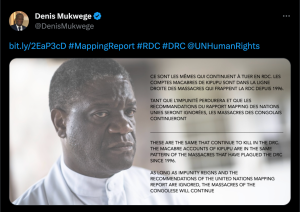
220 victims was immediately announced by provincial members of parliament, then broadcasted by international media. For the occasion, Nobel Prize laureate Denis Mukwege remarked: “They are the same people who continue to kill us” (“They” meaning Congolese Tutsi). The number of victims was finally brought down to fifteen (15) after a joint MONUSCO – DRC government mission visited the site on July 29th, 2020. I explain the entire blunder in a previous article, here and Mukwege never rectified it.



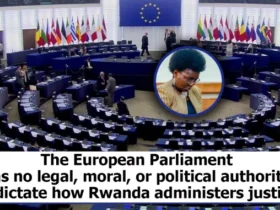

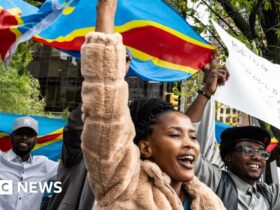
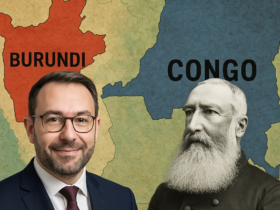

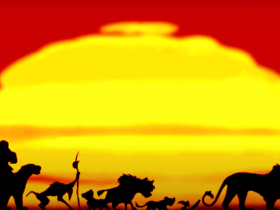

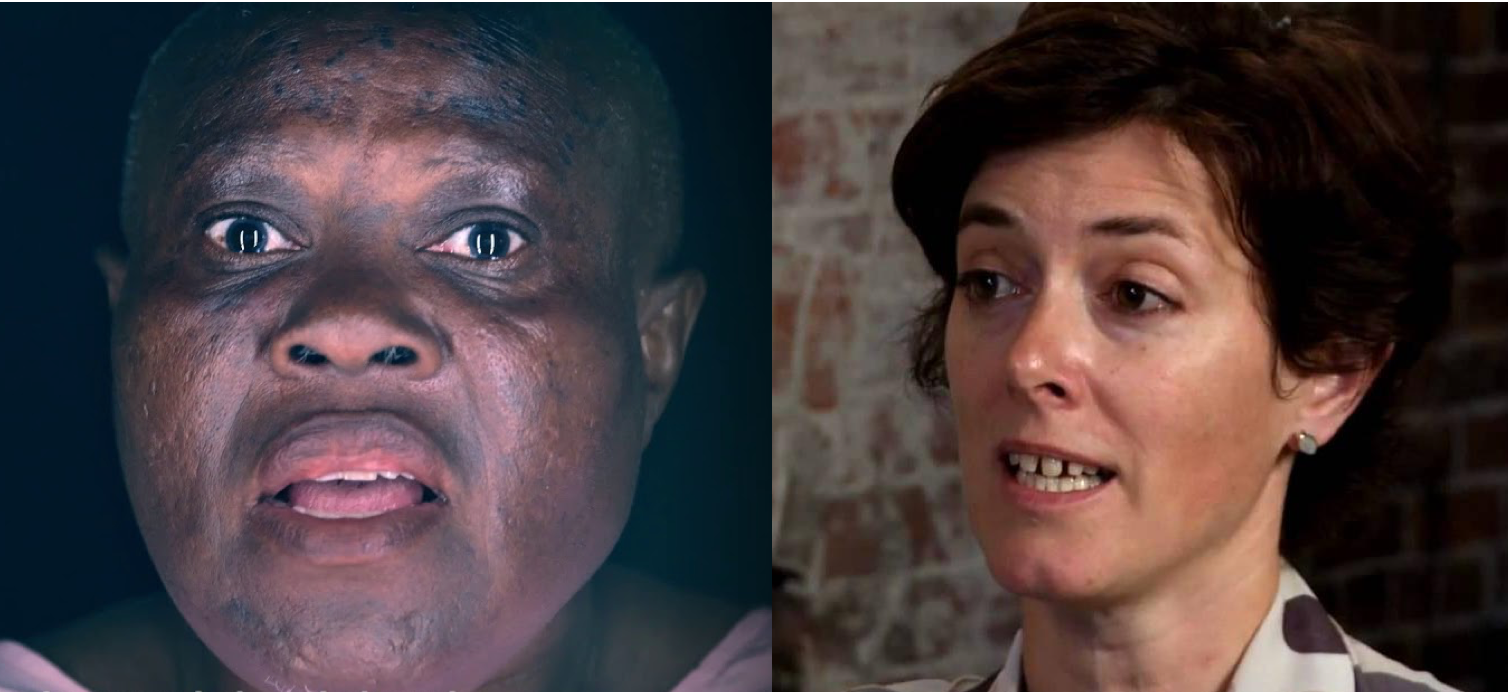
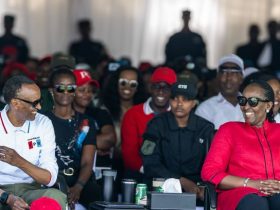
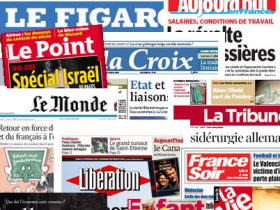

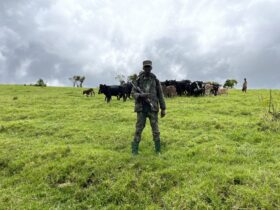
Unfortunately, not all parties involved are in for the truth, otherwise the issues in Congo would be easy to solve.
Let’s hope that in the long run justice and humanity prevail.
Thank you Gatete
Can’t the Rwanda government buy space in the international media and hire very articulate experts to debunk these falsehoods and lies and put these so called experts to the task to prove their allegations as this man, I think he is called Jonathan has been doing to the Carina/ Rusesebagina so called phone hacking.
A well documented and written piece. Thank you for sharing.
Regarding the « group experts » report, it appears to me that, the hate toward Rwanda and Tutsi people made the authors lose sight of their mandate.
They are So blinded by Hutu ideology that has driven them beyond reason to the point where they forgot their report will be read by reasonable people.
How one can take their report seriously when the used sources of information are not reliable and trustworthy?
There is no such thing as “Hutu ideology”. “Parmehutu” is an ideology of “Wazalendu” like in DRC: The parties were called “Aprosoma” by Gitera and “MDR-Parmehutu” by Kayibanda.